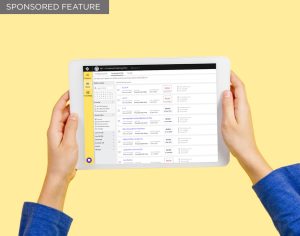After the Office for National Statistics announced that the UK economy shrunk by just under 10% last year compared to 2019, media outlets were quick to point out it had recorded its worst performance in over 300 years. That said, business owners didn’t need officials to confirm the environment in 2020 ranked as one of the most challenging in recent memory.
Amid the uncertainty caused by the pandemic, many SMEs rushed to secure funding from the various schemes launched by the Chancellor Rishi Sunak in an effort to protect jobs and help businesses to survive. According to the latest figures, as of 24th January, more than 87,000 firms had borrowed nearly £21 billion through the Coronavirus Business Interruption Loan Scheme (CBILS), while the Bounce Back Loan Scheme (BBLS) had issued almost 1.5 million loans worth over £44 billion.
With the rollout of the vaccine, the outlook has improved for 2021, even though the latest lockdown means business activity got off to a slow start. The National Institute of Economic and Social Research (NIESR) expects the economy to grow by 3.4% this year, lower than previous projections of 5.9%, but the fastest pace in 20 years nonetheless.
As the uncertainty fades, SMEs can and should start taking a more long-term approach to financial planning again so they can benefit from the economic rebound.
Just before Christmas, the Chancellor announced that CBILS and BBLS would be extended until the end of March. If your business hasn’t already taken advantage of the favourable terms on offer, including an interest holiday for the first 12 months, then make sure you don’t miss this deadline. Once these schemes come to an end, SMEs will face higher charges from lenders and may have to provide personal guarantees. And if you’ve already secured funds, don’t forget you can top them up to a total amount equal to twice your annual wage bill or 25% of your turnover in 2019 or your company’s liquidity requirements for 18 months.
If you’ve borrowed the maximum available, but you still need access to further funds, you have options.
Alternative forms of lending include invoice finance and asset finance. Invoice finance allows you to borrow against your accounts receivable, so you don’t have to provide security such as your premises. If you’re looking to invest in machinery or vehicles, then you might consider asset finance which lets you either lease equipment or pay for it in instalments. Firms that are asset rich but cash poor can apply for asset refinance and use existing equipment as collateral.
A commercial mortgage may be suitable if your business thrived during the pandemic and you’re ready to expand. Commercial mortgages work like residential mortgages, so you borrow against the property itself, which often works out cheaper than renting.
Finally, your business could be eligible for a grant. For instance, the government offers incentives for firms in the science and technology sectors by providing research and development tax credits, while Innovation UK invests in new ideas. SMEs can also apply for regional grants through Local Enterprise Partnerships.
“
Share via:








































